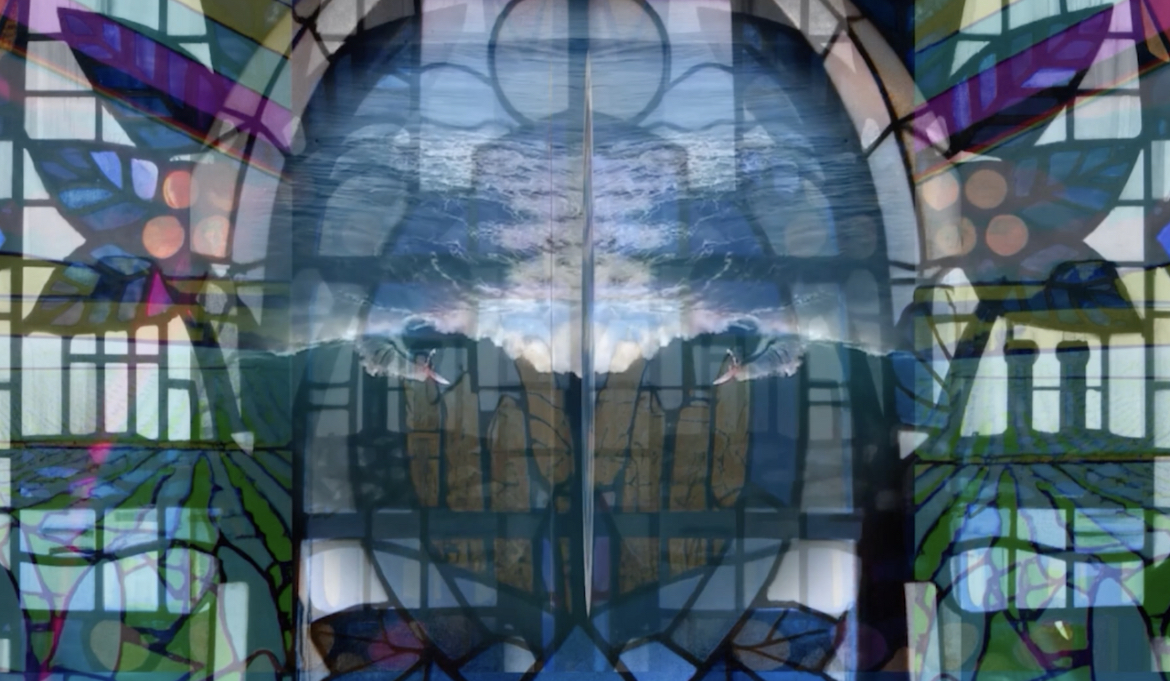- Site of Production –Don Gill
- Site of Production –Don Gill
- Site of Production –Don Gill
- Site of Production –Don Gill
Site of Production
Don Gill
8 January–
26 January 1991
Curated by: Nancy Shaw
Site of Production
Don Gill
Curated by: Nancy Shaw
Brochure Essay by Don Gill
Don Gill
Sites of Production
Much of what has occurred during colonial times in North America (and perhaps pre-colonial times as well, but there are other voices better qualified to discuss that than mine) can be extracted from personal historiesy tall tales, oral histories, anecdotes, etc., that come from many sources. History is montage; a multiplicity of voices remembering, testifying, proposing, lyings dismissing, agreeing, negotiating, threatening, demanding, honouring, disagreeing, whining, bitching, complaining, aad nlultiple other forms of clamorous and piquant discussion.
This photographic project titled Sites of Production originated with tile documentation of sites in western Canada, but I have since expanded the scope of the project east to the Atlantic region; south to Mexico and California; and further to Englandy Scotland, Wales, Ireland, and Ulster. The individual works that collectively make up Sites of Production are in some way representative of sites that have significance in the character of the various regions and which are activated by their position in history. (This significance of site is reflective of their position in history.)
The colonial history of much of North America has been formed by a boom-and-bust economy. ‘With a reliance on the harvest and export of natural resources on the world market, the story of the search for gold is characteristic of and central to this model. The early search for El Dorado in South and Central America, the gold rushes in the American territories from California north in the 1840s, the Fraser River and Cariboo strikes in the I 850s, the progress north through the British colonies (later Canada) to the Klondike in 1896 and still further till the sands on the beaches of the Arctic Ocean were mined at Nome, Alaska around the turn of the century; these and other regional economic surges which occurred in the nineteenth and twentieth centuries provided the impetus for colonial exploration, settlement, and expropriation, with the subsequent displacement of the aboriginal peoples.
Most of these boom-and-bust settlements disappeared with the minerals, leaving little evidence of their existence except as names on o1d maps. Others went on to become major centres such as Vancouver and Victoria in British Columbia. The names themselves are significant in their role as signification of colonial possession, as well as existing as a code efforts of the recent history of the regions: whether nostalgically colonial (New Westminster), aboriginal (Squamish), or economic (Gold Bridge).* The association of name to site often seems arbitrary and tenuous, particularly in the light of aboriginal land claims and desire for self-determination. Although this project started out very specifically as a concern with western Canada, it should not be seen as restricted to this area; the region does not exist independently of the world and the expansion of the project reflects that fact. The Western Canadian selections started not as a sentimental reflection of times past or passing but rather as an appraisal of life in a region that is suffering from depopulation of the rural areas in favour of urban centres. The countryside is now seen as a playground for urbanites or as a field of corporate management. A site where history is losing intrinsic value in exchange for its value as an attraction for the tourist dollar. This loss is not specifically a regional issue but one of international scope; a symptom that had its origin in the industrial revolution but has yet to become firmly fixed within any written histories.
The raw material of historical construction is derived from the commonplace: family albums, oral history, account books, events of natural history, remnants and fragments of engineering and architectural construction, official and unofficial archives, political clashes, the breaking and mending of social contracts and all the detritus that accumulates with the passage of time. The reading of these entrails (more precisely, who is reading these entrails) determines which particular history will be elevated to the status of authority.
The scrapbook, as a repository ofgathered information, becomes a unique version of history, one that is a particularly personal and idiosyncratic narrative. Photographs, texts, souvenirs, newspaper clippings form a montage of information that ultimately provides a personal open-ended archive, a mnemonic prosthesis, as it were. A repository of collated information from which one can examine and subsequently extract portions for use in other expanded projects; or, as in Sites of Production, leaves from the books can be recreated on a larger, more formal scale.
* G.P.V. and Helen B. Akrigg, in their book British Columbia Place Names, suggest categories for motives of name-givers as follows: 1. Descriptive names, 2. Metaphorical namely :3. Possessive names, 4. Nostalgic names, 5. Episodic names, 6. Memorial names, 7. Honorific names.
Site of Production: Don Gill (77.66 KB)
Artist Bio
Don Gill
Don Gill is originally from Cranbrook, B.C. and has lived and travelled in many parts of Canada’s west and north. He received his B.F.A. from the University of Victoria in 1978 and did independent graduate studies in the history and theory of communication at Simon Fraser University in the early 1980s. He is a founding member of the Association for Non-Commercial Culture and is currently working toward an M.F.A. at the California Institute of the Arts in Los Angeles.




